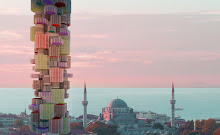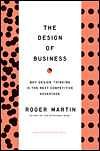Little did I know when I was lining up for tickets for Takashi Murakami's exhibition at the Museum of Contemporary Art (MOCA) in Los Angeles this past Saturday, I was about to embark on a trip of color, wonder, hope, bizarre cartoons and life-size manga characters. What I also did not anticipate was how these images would suddenly trigger a host of hazy memories of my childhood in Tokyo. Until this recent exposure to Murakami's work, I never realized that I grew up seeing his designs frequently in commercials, bank and department store promotions, cartoons....
As a child I connected with the bright colors and the seeming optimism and unusual but lively characters. Seeing his work as an adult, I appreciated his attempts to cross boundaries, cultures (he is heavily influenced by the work of Andy Warhol, Jackson Pollack); traditions (Japanese, American new and old); and to question assumptions and beliefs.
With a PhD in tradition Nihonga or traditional Japanese Painting, he draws on traditional Japanese techniques in completely unconventional ways. His images here much like those seen in Nihonga are very flat and two-dimensional. With the two paintings below, he uses silver as the background, often used in traditional Japanese paintings, but the subjects are very contemporary. Traditional high art is juxtaposed against the low art of cartoons.
 "Time Bokan- Blue" ©Murakami
"Time Bokan- Blue" ©Murakami
The skull is sad and yet hopeful with the flowers as eyes - which I assume references Japan's history with the atomic bomb.
Commissioned by Marc Jacob to redesign the logo for Louis Vuitton, Marukami came up with this new design. The collaboration became a melding of decades' old icons of Louis Vuitton with the distinct colorful animation of Murakami. In the Los Angeles exhibition, there is actually a Louis Vuitton store as part of the exhibition selling bags with Murakami's designs. Which then races the question - where is the line drawn between what is commercial and what is art?
Commissioned by Marc Jacob to redesign the logo for Louis Vuitton, Marukami came up with this new design. The collaboration became a melding of decades' old icons of Louis Vuitton with the distinct colorful animation of Murakami. In the Los Angeles exhibition, there is actually a Louis Vuitton store as part of the exhibition selling bags with Murakami's designs. Which then races the question - where is the line drawn between what is commercial and what is art?


































No comments:
Post a Comment